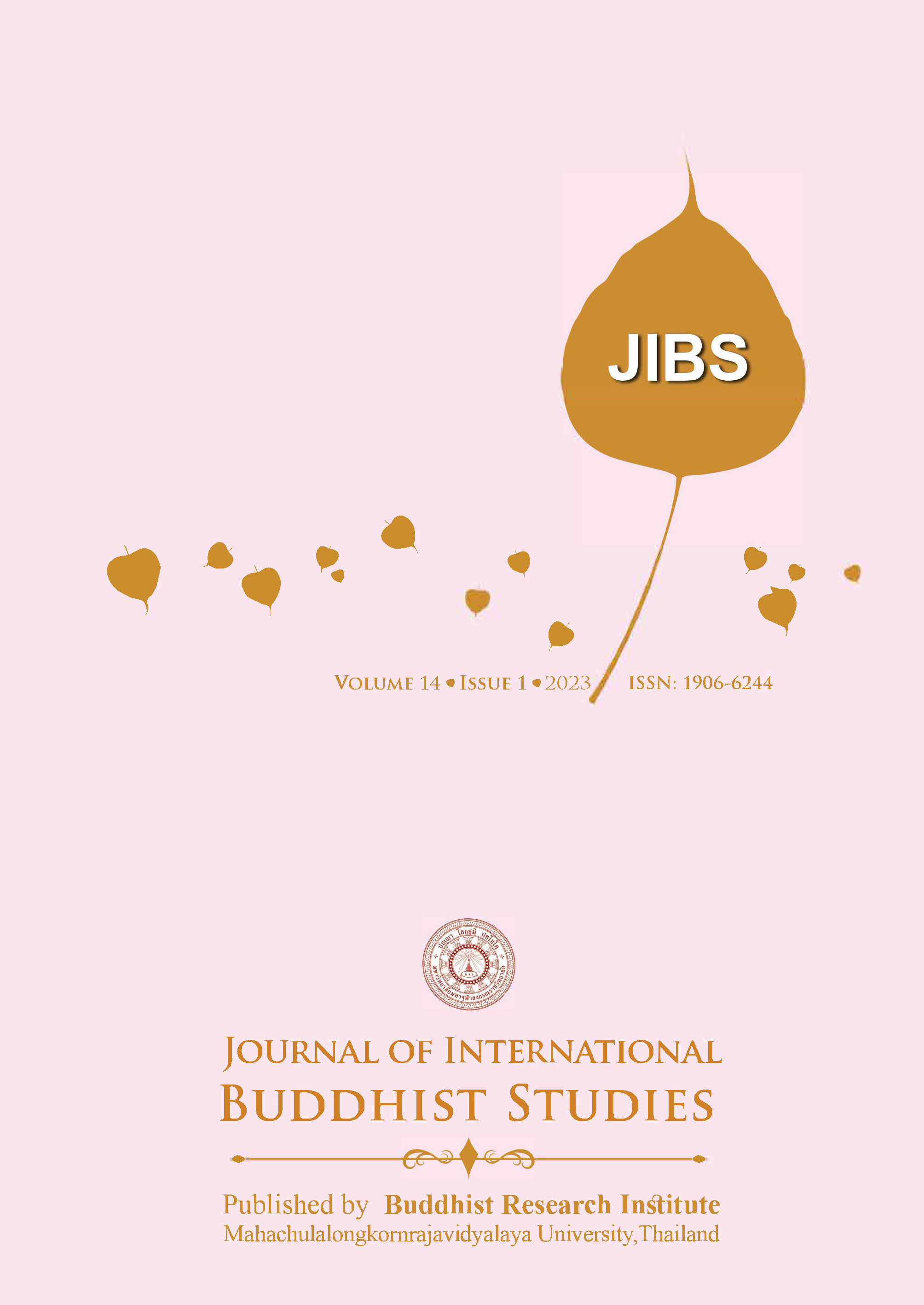The Genesis of Quantitative Buddhist Economics
Keywords:
Quantitative Buddhist Economics, Three Fundamentals, Time, Buddha’s Doctrines, Thai Theravada SchoolAbstract
This paper aims to summarize three fundamentals to create Quantitative Buddhist Economics, QBE, for people living with families and money to solve economic problems using graphs and mathematics that is contemporary style. Mathematics, scientific methods, and some parts of the operation-research method are methodologies. Minkowski's 4D model, price theory of economics, and Buddha doctrines in the Thai Theravada schools are data. The investigation found that three fundamentals of QBE consist of (1) time, (2) the new price model, and (3) doctrines concerning the wealth of individuals from the Thai Theravada schools. First, about time, the inaccuracy, especially time positions of the Minkowski 4D model, was found, and the time equation was found later. The time equation and logical mathematics can reveal the inaccuracies of the price theory, the core of present economics: (1) an equilibrium condition, (2) price adjusting to an equilibrium point, and (3) an inappropriate demand definition, which needs to be corrected. Second, a new price model was created for two objectives: (1) eliminating the inaccuracies for avoiding the collapse of economic theories and (2) using the model for QBE that contributes QBE based on a scientific concept, so QBE can show the many different price concepts compared to present theoretical economics. Third, two cores of QBE consist of the first, the law of action, which shows positive and negative economic results affecting the wealth of a nation and individuals mainstream economists have never considered. The second, the "Heart of Millionaires," reveal suitable activities for solving economic problems based on Buddha’s doctrines: meritorious making money by production, consumption, saving, and making terrific friends.
References
Arrow, Kenneth. Real and Nominal Magnitudes in Economics. New York: Basic Books, 1981.
Boonsri, Poramest. “Discovery in Demand as Cross-Section Data Plus Unified Economic Model.” International Conference on Mathematical and Statistical Physics, Computational Science, Education, and Communication (ICMSCE 2022) 12616 (2010): 20.
________. “Discovery in Reasons Economics is not an Exact Science Plus New Price Model.” International Conference on Mathematical and Statistical Physics, Computational Science, Education, and Communication (ICMSCE 2022). 12616 (2023).
________. “Discovery in Time as a Vector Plus Polarity of Gravitational Force.” Palarch’S Journal of Archaeology of Egypt/Egyptology 17 (2020): 957-966.
________. “The Time Equation Explaining Equations in Physics and Economics.” International Journal of Engineering and Advanced Technology (IJEAT) 8 (2019): 165-168.
Brown, Clair. Buddhist Economics: An Enlightened Approach to the Dismal Science. New York: Bloomsbury Press, 2017.
Davies, Paul. About time: Einstein's Unfinished Revolution. Singapore: Simon & Schuster, 1995.
Drucker, Peter. Toward the Next Economics, and Other Essays. New York: Harper & Row, 1981.
Encyclopedia of Mathematics. Space-time. Accessed January 16, 2023. https://www.encyclopediaofmath.org/index.php/Space-time.
Fullbrook, Edward. A Guide to What's Wrong with Economics. London: Anthem Press, 2004.
Hawking, Stephen. A Brief History of Time: From the Big Bang to Black Holes. New York: Bantam Books, 1998.
Heilbroner, Robert and William Milberg. The Crisis of Vision in Modern Economic Thought. Cambridge: Cambridge University Press, 1996.
Kaku, Michio and Jennifer Trainer. Beyond Einstein: The Cosmic Quest for Theory of the Universe. New York: Bantam Books, 1987.
Krugman, Paul. How did economists get it so wrong?. Accessed December 16, 2021. http://www.nytimes.com/2009/09/06/magazine/06Economic-t.html.
Kuttner, Robert. The Poverty of Economics. Accessed January 16, 2023. https://cdn.theatlantic.com/media/archives/1985/02/255-2/132614438.pdf.
Mahidol University. The Law of Cause and Effect (The Law of Karma. Accessed October 25, 2022. https://www.mahidol.ac.th/budsir/Part4_5.htm.
Nelson, Julie. “Buddhist Economics: An Enlightened Approach to the Dismal Science”. Feminist Economics 24 (2018): 184-190.
Opie, Redvers. “Marshall’s Time Analysis.” The Economic Journal 41 (2022): 199-215.
Phrabrahmapundit (Prayoon Dhammcitto. Religions and Sustainable Development Goals (SDGs). Accessed June 22, 2022, https://www.watprayoon.com/files/book/2562-03-18-SDG.pdf.
Phrarajavaramuni (Phrayudh Payutto). Aññhaïgika-magga: the Noble Eightfold Path; factors or constituents of the Path, Accessed August 2, 2021, https://www.watnyanaves.net/uploads/File/books/pdf/dictionary_of_buddhism_pra-muan-dhaama.pdf.
Phrarajavaramuni (Phrayudh Payutto). Buddhist Economics. Accessed August 2, 2021. https://www.watnyanaves.net/uploads/File/books/pdf/buddhist_economics.pdf.
Prayukvong, Wanna, Isao Takagi, and James Hoopes. “Clair Brown, Buddhist Economics: An Enlightened Approach to the Dismal Science. Social Choice And Welfare 49 (2017): 411-412.
Puntasen, Apichai. “Buddhist economics. The Chulalongkorn Journal of Buddhist Studies.” 12 (2008): 1-61.
Schumacher, Ernst F. Small is Beautiful: Economics as If People Mattered. New York: Perennial Library/Harper & Row, Publishers, 1975.
Skilton, Andrew. “Meditation and its Subjects: Tracing Kammatthana from the Early Canon to the Boran Kammathan Traditions of Southeast Asia.” Contemporary Buddhism 20 (2019): 36 -72.
The Editors of Encyclopaedia Britannica. Demand Curve. Accessed January 16, 2023. https://www.britannica.com/topic/demand-curve.
Veblen, Thorstein. “Why is Economics not an Evolutionary Science? .” The Quarterly Journal of Economics 12 (1894): 373.







